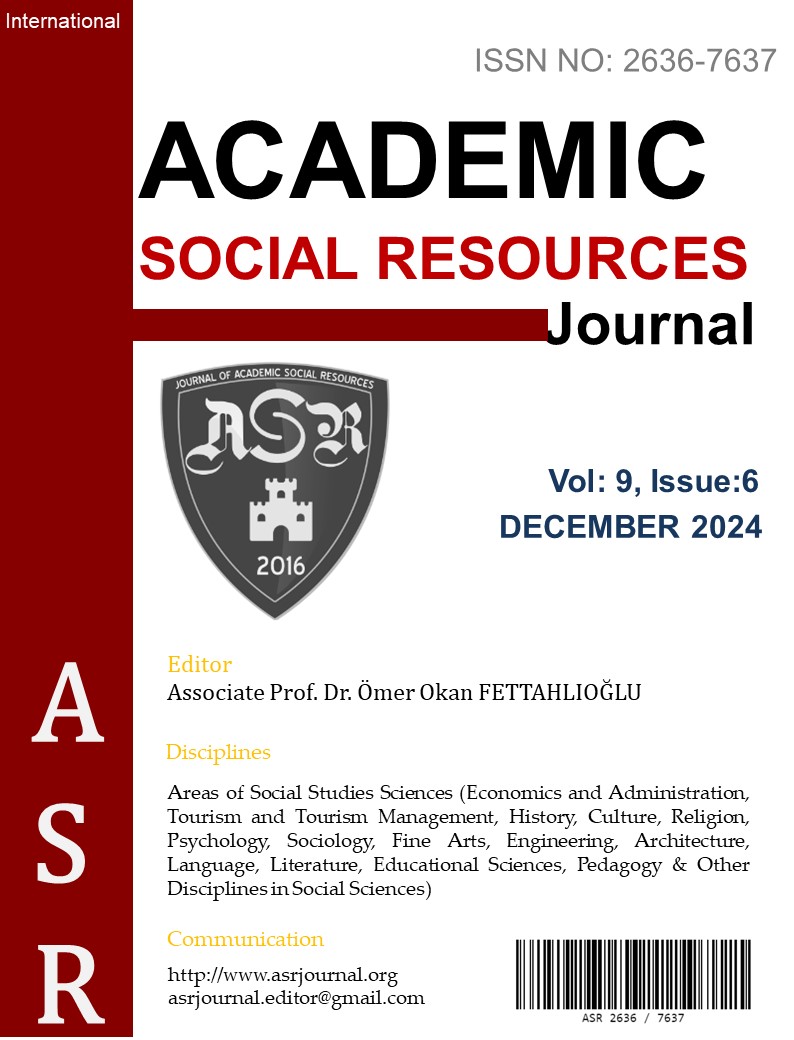Author :
Abstract
Bu araştırmada, sürdürülebilir kalkınma odaklı bir anlayışla küresel iklim değişikliği konusuna ilişkin bir sanal müze tasarlanmış ve tasarlanan müze, Bilim ve Sanat Merkezleri (BİLSEM) öğrencileri ve öğretmenleri tarafından ziyaret edilmiştir. Araştırmanın amacı, BİLSEM öğrenci ve öğretmenlerinin tasarlanan bu sanal müzeye dair deneyimlerini belirlemektir. Bu amaç doğrultusunda, müze öncelikle tasarım ve geliştirme araştırma modeliyle (TGAM) oluşturulmuş, ardından ziyaretçilerin sanal müze ile ilgili duygusal tepkilerini ve bakış açılarını derinlemesine incelemek için olgubilim yöntemiyle değerlendirilmiştir. Araştırmanın çalışma grubunu, kolay ulaşılabilir durum örneklemesi ile belirlenen 22 BİLSEM öğrencisi ve 4 BİLSEM öğretmeni oluşturmuştur. Öğrenciler ve öğretmenler, sanal müzeyi VR gözlükleriyle deneyimledikten sonra, yarı yapılandırılmış görüşme soruları aracılığıyla elde edilen yanıtlar, betimsel ve içerik analizinin birleşimiyle analiz edilmiştir. Sonuçlar, öğrencilerin sanal müzeyi hem bilgilendirici hem de eğlenceli bulduklarını, öğretmenlerin ise sanal müzelerin öğretim ortamına olumlu katkılar sunabileceğini belirttiklerini göstermektedir. Ancak öğretmenler, sanal müzelerin uygulamasında bazı önemli sınırlamaları da vurgulamışlardır. Araştırma sonuçlarının, sanal müzelerin eğitim ortamlarına entegrasyonu konusunda değerli katkılar sağlayacağı düşünülmektedir.
Keywords
Abstract
In this study, a virtual museum focused on global climate change was designed with a sustainable development approach. The designed museum was visited by students and teachers from Science and Art Centers (BİLSEM). The study aimed to determine the experiences of BİLSEM students and teachers regarding the designed virtual museum. To achieve this, the museum was initially created using the Design and Development Research Model (DDRM), then evaluated through a phenomenological approach to deeply explore the emotional reactions and perspectives of the visitors toward the virtual museum. The study group consisted of 22 BİLSEM students and 4 BİLSEM teachers, selected through convenient sampling. After experiencing the virtual museum using VR headsets, the participants’ responses to semi-structured interview questions were analyzed using descriptive and content analysis. The results indicated that students found the virtual museum informative and enjoyable, while teachers suggested that virtual museums could positively contribute to the teaching environment. However, teachers also highlighted several critical limitations in implementing virtual museums. The study findings are expected to contribute valuable to integrating virtual museums into educational settings.





